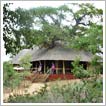
Kilimanjaro Climb Gear List
Top quality mountaineering clothing and equipment is an investment that will see you through years of adventures. It is wise to choose carefully, and not to skimp on quality. The companies and products you see listed below can serve as starting points of reference for you. Take this list to your local outdoor specialty shop.
Feel free to use this list as a reference as you prepare for your trip, but note that not all brands and models are current.
Gear item denotes an item we have available for rental.
Footwear:
Running shoes or lightweight trail shoes: For travel and easy walking. Some days on the mountain you will hike in these shoes. It is important to be able to change footwear to aid in prevention of blisters and other foot discomsforts.
Hiking boots: Leather with sturdy mid-sole and a Vibram sole. ½ or ¾ shank, boots should be warm and fit well over light and heavy sock combination. Combination fabric and leather trail shoes that come over the ankle for support might also be acceptable. Fit is much more important than brand. Take time to select a pair that fits, and break them in well.
Gaiters: For mud in the forest and scree on summit day. Short, simple gaiters are best, such as Outdoor Research's Rocky Mountain Low Gaiters.
Sport sandals: Excellent in camp during evenings and on Safari, open toe model that can be worn with socks (Teva).
Camp booties: Down or synthetic, optional luxury, any brand with thick foam soles. Mountain Hardwear Chugach Booties are excellent.
Lightweight socks: Three pairs Synthetic/Wool Blend (Bridgedale, Patagonia, Smartwool).
Heavy socks: Three pairs Synthetic/Wool Blend (Smartwool, Bridgedale).
Clothing:
It is very important that your clothing fits loosely and comfortably so you can layer your clothes appropriately. This is key for maintaining a comfortable body temperature.
Lightweight pants: One pair (any brand Supplex or “stretch woven” pant).
Hiking shorts –One pair (any brand of Supplex short). Will often be worn over lightweight long underwear bottoms.
Lightweight long underwear top: (Patagonia-Capilene, REI, Mountain Equipment Co-op)
Mid-weight long underwear top: Zip T-neck design is good. Light colors are better for tops because they are cooler when hiking in direct sunlight and just as warm as dark colors when worn underneath other layers. ( Patagonia , North Face, Mountain Hardwear)
Lightweight long underwear bottom: Dark colors are preferable. (Patagonia-Capilene, REI, Mountain Equipment Co-op)
Mid-weight underwear bottom: Dark colors are preferable because they do not show dirt. ( Patagonia, REI, Mountain Equipment Co-op)
Briefs: Four pairs synthetic or cotton. Running shorts also work well for underwear.
Short-sleeved shirts: Two synthetic; most nylon running shirts or athletic shirts work well. Shirt material should have vapor wicking capabilities. (North Face, Patagonia-Capilene)
Fleece or synthetic jacket: Polartec 100 or 200 is good. An even better alternative is a synthetic fill jacket made of Primaloft or Polarguard (Wild Things, Patagonia)
Synthetic-fill pants: such as Mountain Hardwear Chugach 3D Pant. Full side zips are recommended. Fleece pants are an acceptable alternative, but they will be heavier, bulkier and not as versatile.
Down insulated jacket: Medium weight, hood is preferred, but not required. North Face Lhotse Jacket or Summit Jacket.
Waterproof breathable jacket & pants: Such as Gore-Tex. Jacket must have hood. It is recommended that pants have full-length side zips. These garments should be large to fit over your other layers.
Head & Hand Gear
Liner gloves: They should be lightweight and synthetic. (Patagonia Capilene)
Windstopper fleece gloves: (Any brand of Windstopper fleece)
Mittens w/ pile liners: (Outdoor Research)
Bandana: Two to three traditional cotton style. This is an important item with many uses, large sizes are best.
Sun hat: Any lightweight hat with a good brim or visor.
Wool or fleece hat: Any brand of warm hat that can go over ears.
Balaclava: Should fit underneath your wool or fleece hat or be thick enough to be worn alone.
Accessories
Sunglasses #1: For high altitude. One pair of high quality 100%UV and 100%IR with a minimum of 80% light reduction, side shields such as those found on “glacier glasses” are not recommended, but size and shape of lens should offer maximum protection from bright light on snow.
Sunglasses #2: One pair high quality 100%UV and 100%IR, for lower elevations, also as a backup. It is important to have a spare pair of sunglasses.
Headlamp w/ spare bulb: AA or AAA battery powered (Petzl or Black Diamond)
Spare Batteries: Bring plenty for reading in tents at night.
Camping Gear
Backpack: 3000 cubic inches or more, internal frame. Top opening mountaineer’s rucksack style is best. Avoid large zipper openings and excessive outside pockets. Larger packs are better than smaller, because they are easier to pack with cold hands and they distribute loads more effectively.
Pack cover: A big enough size to fit over your backpack to protect from rain and dust.
Sleeping bag: Minus 10F to 0F Down 700 fill minimum (Marmot, Mountain Hardwear, The North Face).
Sleeping pad: Inflating, full-length (Therm-a-rest).
Foam pad: (Ridgerest).
Water bottles: Two1-liter, leak-proof wide-mouth (Nalgene Poly or Lexan bottles).
Lightweight steel thermal bottle: One-liter size. Optional but very nice on the long summit day. Water in Nalgene bottles will freeze unless kept next to the body; it is easier to stay hydrated with warm drinks at 19,000 ft. (Zojirushi “Dura Bottle”, Nissan, Outdoor Research).
Pee bottle: Optional. One 1-quart, leak-proof wide-mouth (Nalgene Poly or Lexan bottles).
Pee funnel for women: Optional but highly recommended (Freshette).
Pack towel: Small or medium size pack towel. Do not bring ‘terrycloth’ they are too bulky and difficult to dry. Bandanas work in a pinch. (PackTowl)
Trekking poles: Useful for going up and down steep, muddy trails in the forest, and general trekking in the higher elevations. Adjustable poles are best so that you can strap them on your pack when not in use. Remove the ski baskets; you will use them for walking. (Leki 3-section, Black Diamond).
Swiss army knife: Remember not to leave in carry-on bags for any international or domestic flight. Scissors are probably the most useful features; you will seldom need the knife blade.
Medical & Personal
Sunscreen: SPF 30 or higher, non-oily (Dermatone or Terrapin)
Lipscreen: SPF 30 or higher (any brand)
Toiletry kit: Toothbrush, toothpaste, skin lotion, alcohol-based hand sanitizer, soap, comb/brush, shave kit, (bring travel size bottles to keep your kit small).
First-aid kit: Ibuprofen/Aspirin, assorted band-aids, moleskin, Neosporin-type suave, small gauze pad, roll of adhesive tape, tweezers, safety pins. Include any prescription travel meds that might be prescribed by your doctor (antibiotics, Diamox, sleep aids).
Large trash compactor bags: For waterproofing some items inside your duffel.
Zip-loc bags: These are always useful.
Baby wipes
Earplugs: Very useful for sleeping in tents and lodges. Available in most hardware stores.
Water purification tablets: Such as Potable Aqua brand iodine tablets. You will be given plenty of purified water during your trek, but one bottle of backup purification tablets is always a good idea for your travels. They are especially useful in hotels on your way to Nepal. You should not drink untreated tap water anywhere in Asia and bottled water in some rare cases might not be available.
Travel Items
River Dry Bag: 115 liter size. This will be the bag carried by porters on the mountain. (Cascades Design Boundary Bag, Cabella’s, REI, Mountain Equipment Co-op).
Large expedition duffel bag: For flying to Africa with your dry bag and other belongings. Will be stored at you hotel in Arusha while you are on the Mountain and again while you are on safari. (Eagle Creek, Wild Things “Burro Bag” North Face Expedition Duffel, XL). Hockey bags also work.
Small travel bag: Important. Your duffel bag will stay in Arusha while you are on safari. You will take this small bag in the Land Rover for nights while you are away on safari. (Wild Things “Carry On”, North Face, Eagle Creek).
Nylon stuff sacks: Two or three, for organizing, light colors preferable for labeling.
Clothes for safari: Two or three changes depending on the length of safari. Comfortable travel clothes. Days are dusty, cool in the mornings, warm in the middle of the day. At the end of the day we return to our lodge where you will shower and change for a nice dinner.
Lightweight travel jacket: Simple wind-shirt or light fleece. Average evening temperatures in Arusha, Tanzania and Nairobi is in the 40’s F (5 - 8 C) in July and August. December and February are warmer, but evenings and mornings at higher altitudes on safari are always a little cool.
Work-out clothes and/or bathing suit: Simple and versatile, for hotels.
Passport belt/pouch
Book(s)
Journal
Binoculars: Optional. High-quality, 8x32 or 10x42. Great for safari
Camera, lenses, video camera: Bigger lenses and cameras for safari can be stored in Arusha if you prefer.
Film and/or memory cards for digital cameras: Bring plenty, as well as plenty of camera batteries. Film is expensive in East Africa, and memory cards are generally not available. Be sure to keep film in your carry-on luggage, in clear zip-loc bags so that it can be inspected.





